Inside Out Special Needs Parenting, Part 2: Brain Basics
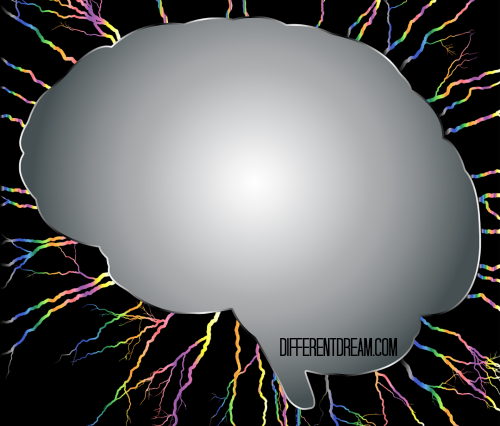
This post is the second in Different Dream’s series about special needs parenting from the inside out. The series is a compilation of information learned while doing the research for Does My Child Have PTSD? What To Do When Your Child Is Hurting from the Inside Out.
Today’s post is a tour of brain basics. What you learn here will be used in later posts to explain why our kids can push our emotional buttons and make us act like crazy people sometimes. Many of these concepts and the hand map of the brain can also be found in Parenting from the Inside Out: How a Deeper Self-Understanding Can Help You Raise Children Who Thrive by Dr. Daniel Siegel and Mary Hartzell.
Inside Out Special Needs Parenting, Part 2: Brain Basics
Believe it or not, a hand can be used to visualize the brain. Start by looking at the palm of your hand with the thumb folded in. Think of the center of your wrist as the spinal cord. That makes center of your palm the brain stem. It’s the most primitive part of the brain. It connects the brain to the spinal cord and controls basic functions. Think heart rate, breathing, digesting foods, and sleeping. It also takes in data from body and moves it on to various parts of the brain.
Limbic Region Brain Basics
Now let’s move on to the limbic region of the brain. One of its jobs is to mediate emotions and general motivational states.
The middle segment of your thumb is the hippocampus. It’s the center for processing new memories and for moving them into long term storage. The hippocampus also connects emotions and senses, such as smell and sound, to memories.
Now look at the knuckle before the middle section of the thumb and label it the amygdala. The amygdala is about the size and shape of an almond. It sits near the bottom of the brain. It is always alert to basic survival needs and emotional reactions like fear and anger. It causes fear reactions like sweaty palms and butterflies in the stomach.
Now take your hand and fold down your fingers over your thumb to discover another part of the brain that is part of the limbic region. Your two middle two fingernails are the anterior cingulate. It is the chief operating officer of the brain. It helps coordinate thoughts and bodily movements. It determines what we pay attention to. It’s also involved in creating emotions.
The orbitofrontal cortex is also part of the limbic region of the brain. It is the fingers closed over the thumb in our hand model. As you can see, it sits at top of brain. It is considered the center for most evolved brain functions such as abstract thinking, reflection, and awareness.
The orbitofrontal cortex has several major areas, one of which is the frontal lobe. On your hand its the front of fingers from second-to-last knuckle down to fingernail. The frontal mediates reasoning and all the processes that go along with that. The frontal lobe also helps us self-regulate emotions and many other things.
If you have a hard time visualizing all this, perhaps this diagram will help.
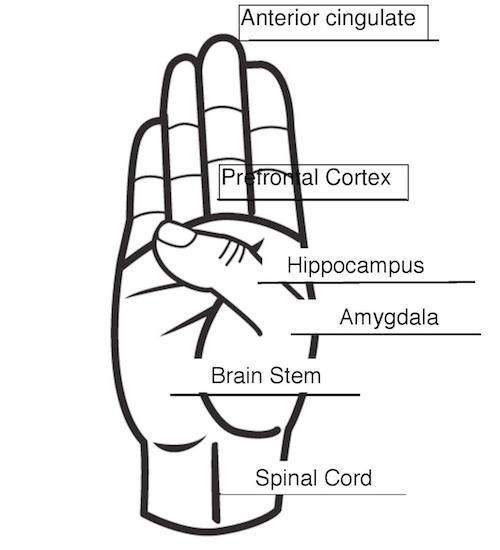
As was mentioned earlier, these brain basics can help us understand why our kids can push our buttons and make us act less like parents and more like, well, kids. Or, as will become clear in the next post in the series, why our kids make us flip our lids.
Your Brain Basics Questions?
Do you have questions about this brain basics information? Leave a comment and I’ll try to answer.
Inside Out Special Needs Parenting, Part 1
Do you like what you see at DifferentDream.com? You can receive more great content by subscribing to the quarterly Different Dream newsletter and signing up for the daily RSS feed delivered to your email inbox. You can sign up for the first in the pop up box and the second at the bottom of this page.
By Jolene
Jolene Philo is the author of the Different Dream series for parents of kids with special needs. She speaks at parenting and special needs conferences around the country. She’s also the creator and host of the Different Dream website. Sharing Love Abundantly With Special Needs Families: The 5 Love Languages® for Parents Raising Children with Disabilities, which she co-authored with Dr. Gary Chapman, was released in August of 2019 and is available at local bookstores, their bookstore website, and at Amazon.
1 Comment
Submit a Comment
Subscribe for Updates from Jolene
Related Posts
Brain Researchers find PTSD Marker
As I've mentioned in previous DifferentDream.com posts, (PTSD Treatment Can Change Your Child's Life, PTSD and NICU Parents: What About You?, and Critically Ill Kids and War Veterans Have What in Common?) war veterans aren't the only people who suffer from...
PTSD Treatment Can Change Your Child’s Life
For the past few weeks, National Public Radio (NPR) has been airing a series called The Impact of War. While listening to several episodes that described the symptoms of PTSD in returning vets, the similarities to our son Allen's PTSD symptoms (caused by early,...
Critically Ill Kids and Military Vets Have What in Common?
A few weeks ago Claire Shackelford interviewed me about A Different Dream for My Child. While we talked, I thought about the double whammy military wives with special needs children deal with every day. My only desire was to encourage the moms as they care for their...



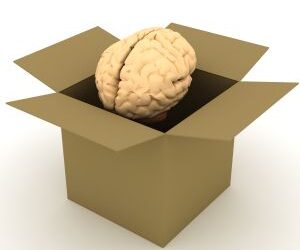
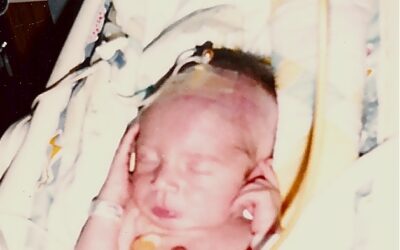
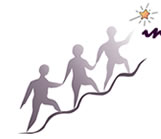
I have been a nurse for 21 years and have never heard the brain explanned this way – I love it! I look forward to this series because my son seems to be “pushing my buttons” right now! (5 year old in an almost 18 year old body ?)